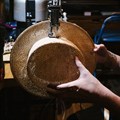Direct-to-consumer marketing enigma is not insurmountable
However, a study conducted by the company also shows that the DTC hype signals three growing paradoxes in consumer decision making that may well reset expectations across industries.
Examples of direct-to-consumer products include meal kits that remove the burden of shopping for ingredients and, simply by using the ingredients supplied in the box and following the preparation instructions, gourmet meals can be served up at home. Another good example is direct insurance. This allows customers to insure individual assets for specific amounts of time immediately and online.
Where are you sitting in the cafeteria? pic.twitter.com/h6ApjTmWvm
— Glossier (@glossier) August 9, 2019
How DTC disruptors were enabled by customers looking for better experiences
The report points out that a decade ago Forrester declared the ‘age of the customer’. Thereafter the drivers of customer empowerment became more quantified. Today, Forrester believes the age of the customer has resulted in a tidal wave of DTC disruptors – digital-native, direct-selling startups that threaten to topple traditional retail models.
According to the report, this shake-up is being powered by four forces:
- Customer empowerment – disruptors position themselves as the consumer hero, allowing customers to try products before they buy them. These digital-native brands embrace hybrids of physical and digital experiences by using pop-up stores or in-store events.
- Adopt and abandon – Consumers are increasingly willing to experiment. According to Forrester’s 2019 Q1 DTC survey, 56% of US online adults say they are always willing to try out new brands and experiences, compared to just 39% 10 years ago.
- Decision stress – constant access to technology has exponentially exposed consumers to purchase options. However, this exposure to an almost infinite number of brands and products that can be ordered and delivered through a multitude of channels is understandably causing stress. DTC disruptors are relieving decision anxiety by actively suggesting items that mirror the customer’s previous choices and tastes.
- Sharing is caring – The sharing economy has shifted the notion of ownership in the minds of today’s consumers. Sharing services are becoming increasingly attractive and, what’s more, the value of experiences rather the objects is growing. Many successful DTC disruptors are tapping into the desire for experiences and the willingness to share services in order to preserve scarce resources.
Forrester points out that while DTC disruptors have predominantly focused on the US retail space, they are now making themselves felt across industries and across geographies.
According to the report, DTC startups are hastening a shift in the consumer decision-making process.
This is giving rise to the three key paradoxes that Forrester says CMOs must navigate by honing their use of best-in-class core marketing techniques: walking in the customer’s shoes; creating tangible and intangible customer value; and closing the gap between business and customer needs.
While the hype surrounding DTC disruptors may fade, the paradoxical consumer expectations will not.
Forrester recommends that CMOs should identify their areas of greatest potential value by triangulating their:
- Consumers - Customer journey studies can be used to identify which of the three consumer paradoxes are most relevant to your customers.
- Brands – CMOs must consider what distinct, added value they can deliver to solve the three consumer paradoxes and how customer data can help shape a new or improved brand experience.
- Category – Each industry has a particular customer purchase journey and a particular set of constraints that influence brand loyalty. CMOs should design experiences that account for customers’ product usage patterns and category perceptions.
CMOs must hone their use of classic marketing best practices to keep up. They must tackle these paradoxes by walking in the customer’s shoes, creating new tangible and intangible value and closing the gap between the company and consumer.


















